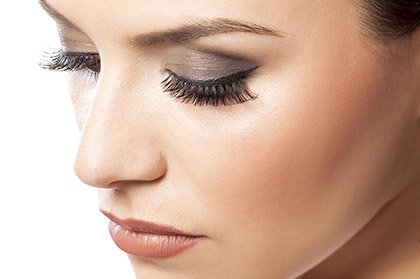SURGICAL
HOME / SURGICAL
Surgical Facial Procedures
Surgical Body Procedures
Blepharoplasty – Eyelid Surgery

A blepharoplasty is the procedure used to alter and enhance the eyelids due to wrinkling, droopiness o excessive skin. It can also remove the puffiness or bags under the eyes, improve symmetry, give a more youthful appearance, or to protect the eye from facial nerve paralysis complications. It is often done with other facial cosmetic procedures.
Done with general o local anesthetic, the incision is made on the eyelid or the inside of the lower lid depending on what you want to treat. Any excess skin is removed and fat is removed or repositioned. Sometimes the soft tissues and muscles can be stitched for tightening. Preferably, the incisions will be hidden within the natural creases of the lids, and tissue glue is also an option to avoid stitching.
It is important to speak honestly with your surgeon about what your expectations and concerns are with the surgery and you may need to rely on word of mouth, and visit a couple of doctors until you find one you are absolutely happy with. Any surgeon with experience will be able to show you pictures of pre-and postoperative patients so you can see actual results.
LOWER EYELID BLEPHAROPLASTY
Blepharoplasty on the lower eyelid can be done when there has been loss of facial nerve functions, in this case, the sagging can cause chronic dryness and permanent damage to eyesight. For the Lower Eyelid Blepharoplasty, there are two surgical procedures that can be used. The anterior transcutaneous or external approach, which is basically done with an incision just under the eyelash line; and the posterior transconjunctival or internal approach, which means that the incision will be made on the inside of your lower eyelid.
UPPER EYELID BLEPHAROPLASTY
This commonly performed surgery is perfect for correcting sagging eyelids, defining contours around the eyes, in the space between the eyebrow and the eyelashes. It can be done because of hereditary drooping of skin and tissue, heavy eyelids due to excess fat, asymmetry between the two eyes, obstruction of vision due to excessive skin or sagging. The Upper Eyelid Blepharoplasty is done by first measuring and marking the incision points. The desired skin, tissue and fat are removed until the surgeon is satisfied it will produce a youthful and healthy appearance, making it functional at the same time. The incisions are then closed with stitches.
POTENTIAL RISKS AND COMPLICATIONS
Although this is a very simple procedure, there are risks involved, such as: bleeding, infections, scarring, watery or dry eyes, temporary blurred vision, difficulty in closing your eyes or blinking, loss of eyelashes and a feeling of pulling or tightening of the eyelids.
WHAT TO EXPECT POST SURGERY?
After the surgery, you may experience swelling, bruising, and itchiness. If you have any stitches, they will be removed around a week after the procedure and you will be given very specific instructions as to how to care for the wounds, such as using sterile strips, ointments and eye-drops. It is very important that you follow these instructions to the letter to avoid trauma, infections or soreness. Do not rub or scratch your eyes and avoid using contact lenses for at least weeks, use sunscreen and sunglasses, and protect your eyes from the elements as much as possible.

